Frank's travels around Britain 2008.
Emworth, Petworth &
Uppark.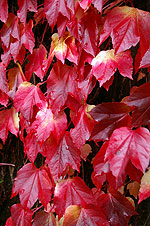
 Bad weather was a poor start
to the break once again. Nevertheless, being Great
Britain, you only have to wait a short while & you can get a stunning summers day,
even in October!
Bad weather was a poor start
to the break once again. Nevertheless, being Great
Britain, you only have to wait a short while & you can get a stunning summers day,
even in October!
Travelling down to the lodge, at Arundel Fontwell, the rain just poured down. The next day was no better either, I tried to photograph that lovely view of Arundel castle & cathedral rising above the plain but it was pointless in the murk & rain. I understood that Petworth was a huge house worth seeing (and dry). I wondered if the trees were changing for the autumn & could I get good, if damp, pictures in the gardens. Nope Frank! It's about two weeks or a month too soon. All that happened was the wall vines had gone the magic red.
Petworth is colossal. Just stuffed with Art & is slightly depressing to me. Just another "home" of extremely rich & influential families going back to 1688. Coming from Moss Side in Manchester & thinking that getting "The National Geographic" magazine by post was so cool & sophisticated. I looked at rooms so big they made Buckingham palace look modest. The upstairs/downstairs of the servants quarters that were hardly mentioned. The collections of pictures & sculptures that looked as if they were there only because you could afford them & wanted to demonstrate your wealth. I was never a socialist but I can see where it comes from. The gap between the rich & poor just seems to be a place to breed greed & envy.
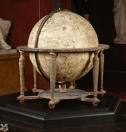 Of
course there is always something to catch your breath with this much wealth on show.
Whether it is the gardens by Capability Brown, pictures by Turner, woodcarving by Grinling Gibbons
(that you cannot believe is possible) & then there's Frank's favourite! I have always
loved maps, to see a globe fascinates me & there, at Petworth, was the Globe by
Emery Molyneux from 1592. This is the time of Elizabeth the first & Sir Walter
Raleigh! There it stands in a glass case. Hundreds of years of finger marks & dust make it
difficult to read but it is the knowledge of adventurers, seaman & education
that gives you the known world of the 16th century. Only six of his globes are
believed to be still in existence. There are only three in England.
Of
course there is always something to catch your breath with this much wealth on show.
Whether it is the gardens by Capability Brown, pictures by Turner, woodcarving by Grinling Gibbons
(that you cannot believe is possible) & then there's Frank's favourite! I have always
loved maps, to see a globe fascinates me & there, at Petworth, was the Globe by
Emery Molyneux from 1592. This is the time of Elizabeth the first & Sir Walter
Raleigh! There it stands in a glass case. Hundreds of years of finger marks & dust make it
difficult to read but it is the knowledge of adventurers, seaman & education
that gives you the known world of the 16th century. Only six of his globes are
believed to be still in existence. There are only three in England.
I ended up in Chichester that evening. I'm sure it's a lovely town but it looked like it was designed for ladies to shop in. In the centre is the nice Chichester cross, but nothing looks too good in the rain! The next day was glorious! As sunny as summer, cool but refreshing & a visit to Emsworth made it all worth while.
 The name Emsworth was probably once Emel's
worth or Emil's worth. A worth was an enclosure like a farm or hamlet surrounded
by a palisade. During the 18th and 19th centuries Emsworth was a busy little
port. Grain from the area was ground into flour by mills. At Emsworth there were
tidal mills. When the tide came in water was allowed to flow in behind a
barrier. When the tide turned the water was trapped and it was only allowed to
flow out under a mill turning its 'wheel'. The flour was transported by ship to
places like London and Portsmouth.
The name Emsworth was probably once Emel's
worth or Emil's worth. A worth was an enclosure like a farm or hamlet surrounded
by a palisade. During the 18th and 19th centuries Emsworth was a busy little
port. Grain from the area was ground into flour by mills. At Emsworth there were
tidal mills. When the tide came in water was allowed to flow in behind a
barrier. When the tide turned the water was trapped and it was only allowed to
flow out under a mill turning its 'wheel'. The flour was transported by ship to
places like London and Portsmouth. Two tidal mill ponds to the east and west of the town centre play host to a
variety of birdlife, and the mills, one on each pond, still remain though now
converted to a variety of uses - gallery, sailing club, businesses and housing. In the nineteenth century there were thirty
pubs in Emsworth now there are only nine. At the end of the 19th century 100,000
oysters were landed at Emsworth every week but the Industry entered a rapid
decline in 1902, after the dean of Winchester and several of his guests, died from
food poisoning after eating Emsworth oysters at dinner. It's a sure way to loose
your industry by poisoning the rich & influential.
It is a lovely place to walk around. A busy & lively village leading down to the
harbour. Full of yachts & dinghies, all on view from a long harbour wall that
encloses the old mill pond. Emsworth is closely connected to the novelist P.G.
Wodehouse, he used characters from the village in his novels - the first of
which were written while he was living at a prep school in Emsworth.
Two tidal mill ponds to the east and west of the town centre play host to a
variety of birdlife, and the mills, one on each pond, still remain though now
converted to a variety of uses - gallery, sailing club, businesses and housing. In the nineteenth century there were thirty
pubs in Emsworth now there are only nine. At the end of the 19th century 100,000
oysters were landed at Emsworth every week but the Industry entered a rapid
decline in 1902, after the dean of Winchester and several of his guests, died from
food poisoning after eating Emsworth oysters at dinner. It's a sure way to loose
your industry by poisoning the rich & influential.
It is a lovely place to walk around. A busy & lively village leading down to the
harbour. Full of yachts & dinghies, all on view from a long harbour wall that
encloses the old mill pond. Emsworth is closely connected to the novelist P.G.
Wodehouse, he used characters from the village in his novels - the first of
which were written while he was living at a prep school in Emsworth.
 Still trying to find place with trees that were changing colour, I wondered if
Uppark and its gardens would provide anything in this
Still trying to find place with trees that were changing colour, I wondered if
Uppark and its gardens would provide anything in this 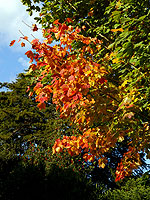 glorious sunshine. OK so it didn't
work! In fact there wasn't even any red ivy at this posh place. Famously, on
30th.August 1989, whilst in the hands of the National Trust, the building was devastated by a fire caused by a workman's
blowtorch whilst repairing lead flashing on the roof, just two days before the
work was due to be completed. The fire broke out during opening hours. Many
works of art and pieces of furniture were carried out of the burning building by
members of the Meade-Fetherstonehaugh family, National Trust staff and members
of the public. The fire left nothing but the walls standing, the upper floors
collapsing down onto the lower floors. Most of the pictures and furniture in the
house were saved. The building has since been completely restored with many lost
crafts relearned in the restoration process, and it re-opened its doors in 1995.
Typical of large houses everywhere, its fame is from the rich past. On the wall,
noting the history of its people,
is a picture of Emma, Lady Hamilton, coyly saying a wild child of the house. She
worked at an exclusive brothel beside the Ritz Hotel called Kelly's. One
customer at this brothel was Sir Harry Fetherstonehaugh. Emma, then still only
fifteen years old, was hired from Kelly's for several months by Sir Harry, as
host and entertainer at a lengthy stag party at Sir Harry's Uppark country
estate. Sir Harry took Emma there as his mistress, but frequently ignored her in
favour of drinking and hunting with his friends. Of course her real fame is as
the lady of Admiral Lord Nelson. If your rich, you can call anybody anything you like.
Wild Child indeed! Another person connected to Uppark, with a different kind of
talent, was H.G. Wells, who spent part of his boyhood at Uppark, where his
mother was housekeeper between 1880 - 1893.
glorious sunshine. OK so it didn't
work! In fact there wasn't even any red ivy at this posh place. Famously, on
30th.August 1989, whilst in the hands of the National Trust, the building was devastated by a fire caused by a workman's
blowtorch whilst repairing lead flashing on the roof, just two days before the
work was due to be completed. The fire broke out during opening hours. Many
works of art and pieces of furniture were carried out of the burning building by
members of the Meade-Fetherstonehaugh family, National Trust staff and members
of the public. The fire left nothing but the walls standing, the upper floors
collapsing down onto the lower floors. Most of the pictures and furniture in the
house were saved. The building has since been completely restored with many lost
crafts relearned in the restoration process, and it re-opened its doors in 1995.
Typical of large houses everywhere, its fame is from the rich past. On the wall,
noting the history of its people,
is a picture of Emma, Lady Hamilton, coyly saying a wild child of the house. She
worked at an exclusive brothel beside the Ritz Hotel called Kelly's. One
customer at this brothel was Sir Harry Fetherstonehaugh. Emma, then still only
fifteen years old, was hired from Kelly's for several months by Sir Harry, as
host and entertainer at a lengthy stag party at Sir Harry's Uppark country
estate. Sir Harry took Emma there as his mistress, but frequently ignored her in
favour of drinking and hunting with his friends. Of course her real fame is as
the lady of Admiral Lord Nelson. If your rich, you can call anybody anything you like.
Wild Child indeed! Another person connected to Uppark, with a different kind of
talent, was H.G. Wells, who spent part of his boyhood at Uppark, where his
mother was housekeeper between 1880 - 1893.
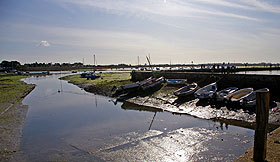
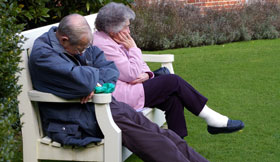
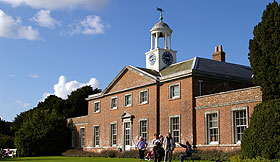
Links for information on this page:
